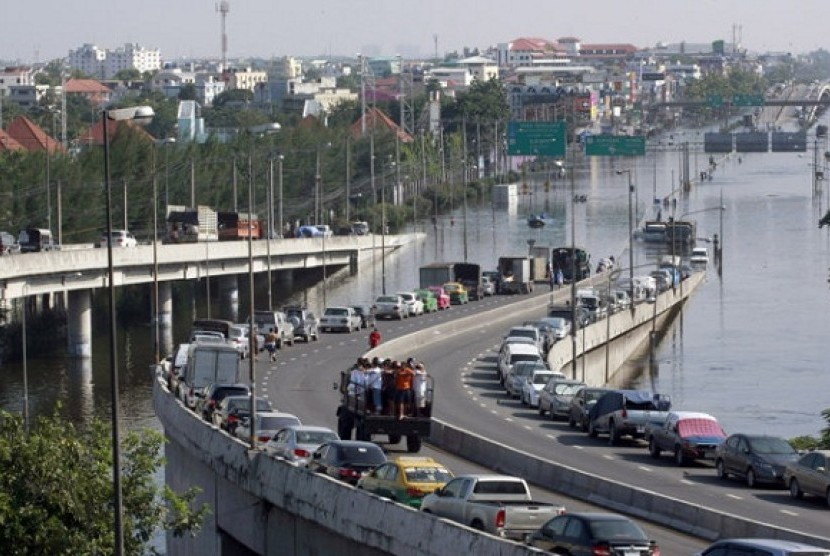REPUBLIKA.CO.ID, BANGKOK - Even before the consequences of climate change became evident, scientists were well aware that Bangkok — whose southern suburbs border the Gulf of Thailand — was under serious threat from land subsidence.
Sea level rise projections show Bangkok could be at risk of inundation in 100 years unless preventive measures are taken. But when the capital and its outskirts were affected in 2011 by the worst flooding in half a century, the immediate trigger was water runoff from the north, where dams failed to hold very heavy rains.
Industrial areas in the capital's suburbs, housing important businesses, were devastated. So the focus was put on a short-term solution for that area.
The government recently announced winning bids totaling 290.9 billion baht ($9.38 million) by Chinese, South Korean and Thai firms to run the flood and water management schemes, including the construction of reservoirs, floodways and barriers.
Solutions to the problem of rising seas are still being studied.
"Construction alone is not sustainable," says Seree Supratid, director of a climate and disaster center at Rangsit University. "People have to adapt to nature. For example, you know Bangkok will be flooded by the rising seas in the next 100 years, then you have to learn to build your houses in a way the floodwater cannot reach it, putting it up high or something."
CUBA
Officials recently finished a study of the effects of climate change on this island's 3,500 miles (5,630 kilometers) of coastline, and their discoveries were so alarming they didn't immediately share the results with the public to avoid causing panic.
According to the report, which The Associated Press obtained exclusively, rising sea levels would seriously damage 122 Cuban towns or even wipe them off the map by 2100. Scientists found that miles of beaches would be submerged while freshwater sources would be tainted and croplands rendered infertile. In all, seawater would penetrate up to 1.2 miles (2 kilometers) inland in low-lying areas, as oceans rose nearly 3 feet (85 centimeters).
Those frightening calculations have spurred systemic action in Cuba, the largest island in the Caribbean and one that is heavily dependent on beach-loving European and Canadian tourists. In recent months, inspectors and demolition crews have begun fanning out across the island with plans to raze thousands of houses, restaurants, hotels and improvised docks in a race to restore much of the coast to something approaching its natural state.
In the tourist resort of Varadero, the country faces a dilemma: Tearing down seaside restaurants and hotels threatens millions of dollars in yearly tourism revenue, while allowing them to stay puts at risk the very beaches that are the main draw.
MBEERE, Kenya
While sea level rise threatens some coastal communities in Africa, the continent faces even bigger climate-related problems inland. Climate scientists have projected shifts in rainfall patterns leading to extended droughts in some areas and increased flooding in other parts. To small-scale farming communities, these shifts could be disastrous, adding further stress to scarce water supplies.
Adaptation therefore is focused on learning to cope with the climatic changes, adjusting farming practices and improving water conservation efforts.
In Kenya's Mbeere district, where people say they're noticing longer dry spells, U.K.-based charity group Christian Aid is teaching farmers to help them predict the seasons and know better what to grow and when to plant.
A text messaging system helps farmers get up-to-date weather reports specific to their locations.
"We are supporting them to access and interpret climate information and help them make forward-looking decisions so that their farming is better suited to the predicted changing conditions," said Mohamed Adow, of Christian Aid. "Farmers live off the land and the weather, and small changes to weather patterns can be a big disaster to small-scale farmers in Africa whose entire livelihoods and well-being depend on farming."


